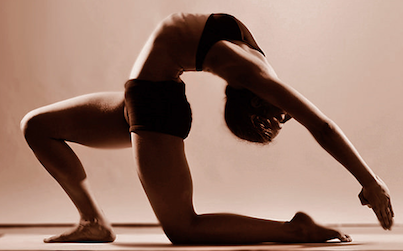Bikram yoga, also known as hot yoga, is rapidly gaining popularity. Characterized by carpeted studios heated to a sweltering 105°F, it is an intense series of 26 yoga postures or asanas as well as two breathing exercises. It is also known for a standard monologue, delivered by the instructor throughout each class.
Pioneered by Bikram Choudhury, a colorful and charismatic personality from Beverly Hills, Bikram yoga exists on the fringe of the yoga community. Many teachers and practitioners caution that hot yoga increases risk of injury since the intense heat makes people more flexible than usual.
Choudhury, however, maintains that Bikram yoga is the only true form of hatha, or physical, yoga taught in the west. His aggressive efforts to protect the copyright and trademark of hot yoga, however, have not won him many friends among western yogis; they accuse him of infringing on their rights by trying to claim ownership of ancient teachings.
Still, one cannot argue that Bikram yoga attracts passionate followers and inspires countless people to develop a healthier, more alternative active lifestyle.
If you are planning to give hot yoga a try, here are a few points to consider:
Bikram yoga is best learned in a classroom setting with a qualified teacher. Do not attempt to learn this practice from a DVD or book, at least not initially. (If there isn’t a qualified teacher in your town you can teach yourself but pay close attention to proper form and watch for any sign of strain, injury or over-exertion.)
Be extremely cautious when stretching into a new position. Be aware of your personal limits, especially when you first learn the positions. Critics believe the heat increases your risk of injury, while proponents argue that it is safer than other forms of yoga. Play it safe.
In hot yoga, the goal is to stretch and warm your muscles, ligaments and tendons. There is a strict order to the practice that must be followed. And, unlike other forms of yoga, Bikram doesn’t include inversions, or upside-down poses.
Don’t rush your practice. It takes 90 minutes to work through the asanas. Take your time; hurrying will lead to poor execution and risk of injury.
Nobody’s perfect. Ignore the person on the mat next to you. Instead, focus on performing each move to the best of your ability. Measure your progress against your previous performance not against any preconceived ideas about what you should be able to achieve.
Practice regularly. It is the only way to improve your practice and reap the rewards of Bikram yoga, including weight loss, muscle tone, greater flexibility and overall improved health and well-being. You are strongly advised to practice daily, especially during the first two months.
Drink plenty of water. The intense heat and physical effort will cause you to perspire. If you don’t drink enough water before and after class, you may feel dizzy or nauseous.
Consider strength training and aerobic activity in addition to regular yoga practice. This will give you greater stability and stamina, essential to day-to-day life as well as your yoga practice.
Take the time to enjoy Bikram yoga. You may also wish to experiment with other yoga styles to see if this is the best one for you.

No Comments